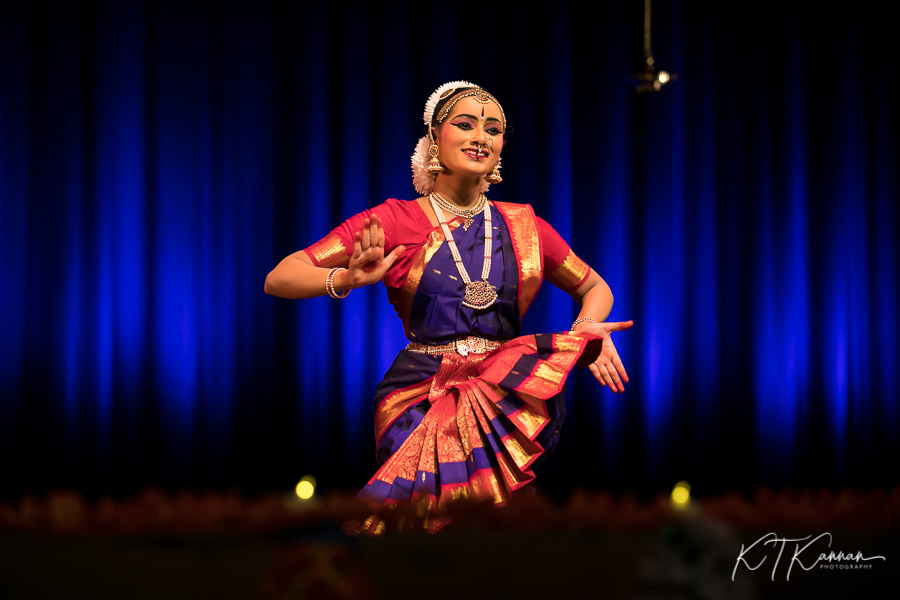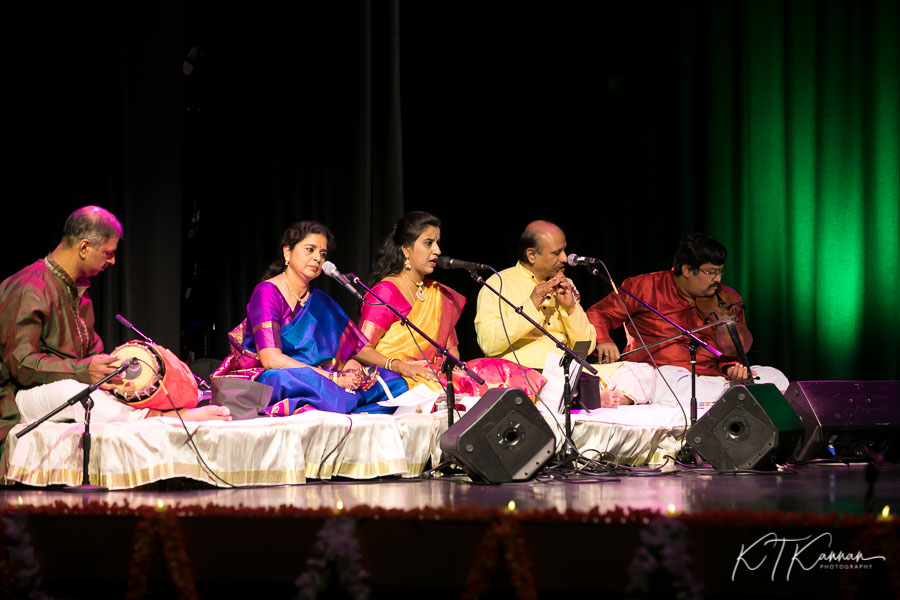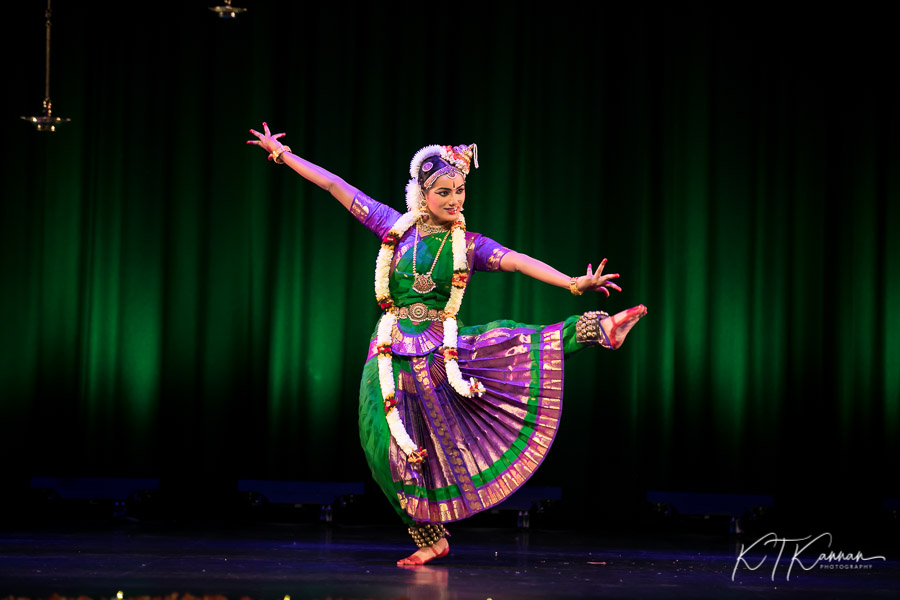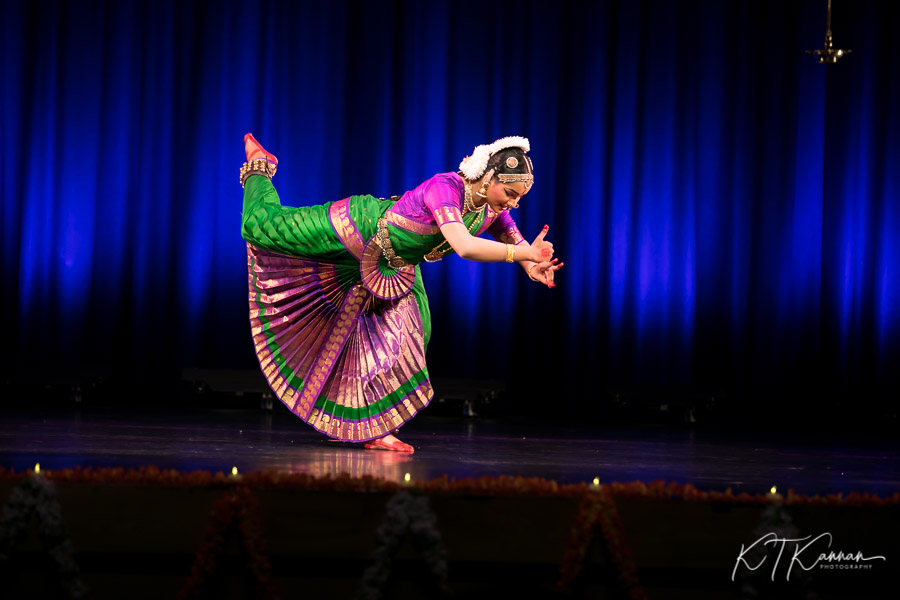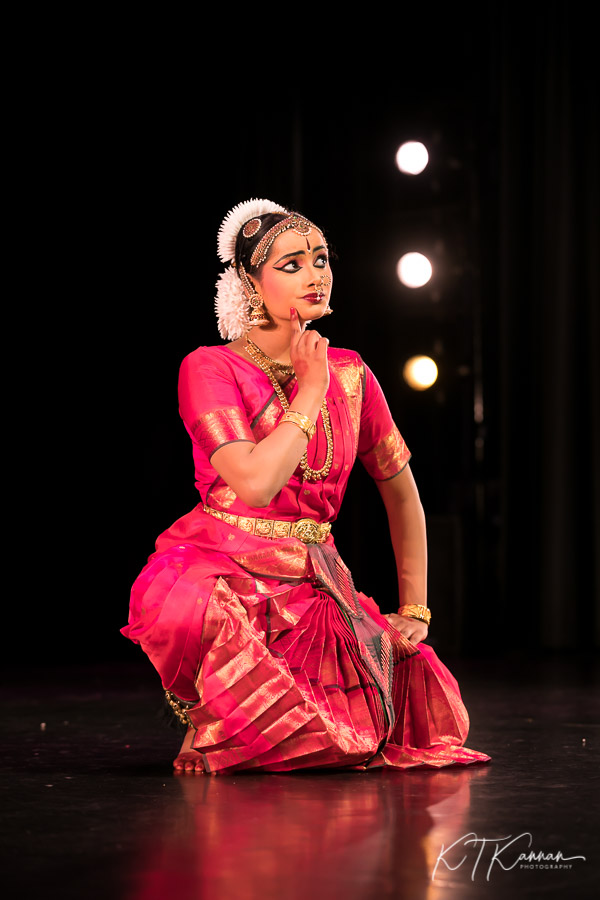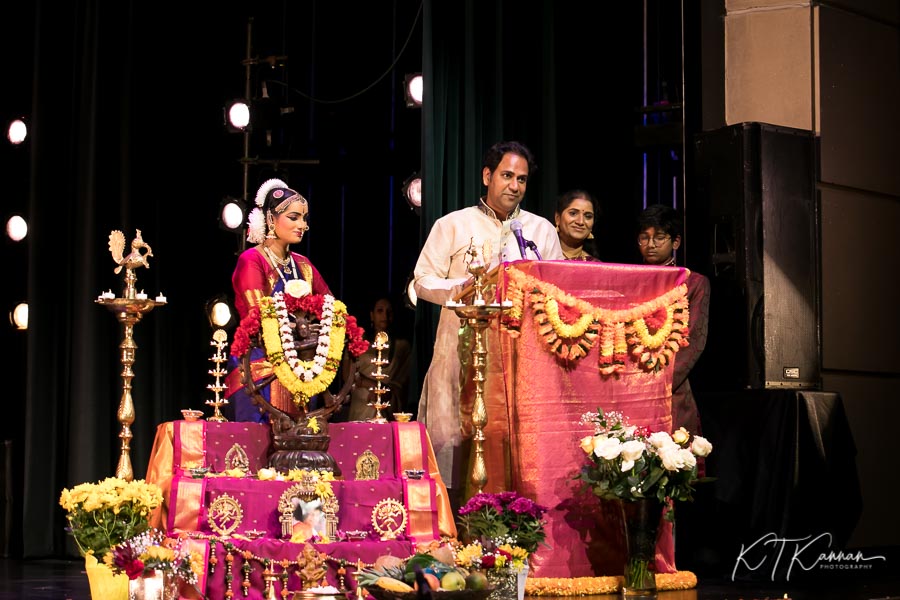Contribute
| Arangetram: Rishika Sai Makkena |
S. Ramamoorthy
07/25/2019
Dual graduations through dedication – Rishika Sai Makkena While I was watching Rishika Sai Makkena’s Bharathanatyam arangetram as one among the many, I went nostalgic recalling the old famous quote, "There is no wisdom or knowledge, no art, no craft or action which is not found in Natya". I was delighted to see this quote come alive on 14th July at the tastefully decorated auditorium of the Littleton High School, Littleton, MA. Rishika came under the tutelage of Guru Jeyanthi Ghatraju at Natyanjali, about nine years ago. Over these years she had equipped herself amicably to the learning process of this art form with hard work and keen application. And, her Guru's sustained tactful teaching provided Rishika with ample opportunities to rise up to stage ascendancy (arangetram) with full confidence. True to traditions, Guru Jeyanthi Ghatraju had enriched the arangetram format with all the items envisaged by the Thanjavur quartet in a margam, right from the invocation to mangalam, giving ample consideration to the theme, composers, ragam, talam, the interests of the host family and the audience. Rishika began her arangetram recital with a traditional Pushpanjali, in ragam Vijayavasantham, a composition by Madurai R.Muralidharan, set to Adhi talam. This was followed by the Shiva panchakshara stothram, in praise of the Lord of dance, composed by Saint Adi Shankara, set in Ragamalika and Khanda chapu talam. The next item was alarippu (a rare one nowadays, but essential item in a repertoire), set in Misra nadai (7 beat cycle). Rishika traversed this pure dance exposition with precise poise. Following this, she presented a rhythmic Nachiar kavuthuvam in praise of Andal, a composition by Gangaimuthu Nattuvanar in ragam Malayamarutham set to Adhi talam. On her rendition she was quite emphatic and admirably excelled in keeping up with the saying, “Bharatanatyam is poetry in motion.†This was aptly dedicated to Rishika’s mother, Sobha’s family! Rishika's next dance number was a jathiswaram in a rare ragamalika-talamalika combo, a composition of Guru K. Lalitha. Rishika “sailed†through the “flow of stream†as it is called; the choreography was enriching with intricate rhythmic sequences fused with repetitive musical notes that Rishika performed with effable ease! After a brief musicians’ introduction, came the evening’s central piece, varnam. Guru Jeyanthi had picked an apt piece, “Annaiyai maravenadiâ€, a time-old gem of a composition by Guru K.N. Dhandayuthapani Pillai in Abhogi ragam, set to Adhi talam. Varnam is often termed as a piece -de- resistance in a Bharatha natyam repertoire and a proud testimony to the comprehension every art aspirant would strive to accomplish. Rishika's varnam was in adoring the bondage between a child, her mother and father. In her enthralling execution of expressions, Rishika took the audience through a series of common, every day experiences that we witness in life. The audience appreciated the eloquent choreography and Rishika's artistic edifice weaved in, through thunderous applauds. Indeed, she lived through the soul-stirring lyrics of the composition and engaged the audience in rejoice throughout the rendition with her deft dance movements, studded with elegant hand gestures and emphatic facial expressions. As Rishika’s father, Praveen mentioned, it was kept as a surprise to him and it was no surprise that this item moved him, along with many in the audience, totally! In a margam format designed by the Thanjavur quartet, entertaining padhams and keerthanams follow an emotional varnam. Rishika presented three such gems of different composers. The first one was Sogasuga mridanga talamu, composed by Saint Thyagaraja in Sriranjani ragam, set to Rupaka talam. This keerthanam in the sober note describes the devotional conversation between the composer and Lord Rama, highlighting the criteria for composing and rendering krithis. The second one was Anandamruthakarshini, a beautiful composition by the great vaggeyakara, Sri Muthuswamy Dikshithar in praise of Goddess Mother, Bhavani, to bestow eternal bliss for humanity. Two distinct things have to be mentioned here – One, this krithi was basically a "rain song '. Yes, when the composer was passing through Ettayapuram, a drought prone village, he was compelled to invoke Mother Goddess to bring in rain (“varshaya, varshayaâ€). Rishika did a beautiful sanchari (story-telling elaboration) for the line, Sri Guruguha Janani†by describing the origin of Lord Muruga from the sparks of Shiva’s third eye! It was a graceful and soul-stirring experience to watch, what with the deft clarity in the deliberation of the syllables with excellent synchronizing by the accompanying musicians. The third padham was Sirutha navvulavadu sinnakka, an amusing composition by Saint Annamacharya in the folk genre. The composition envisages a girl, in the guise of goddess Alarmelmanga in the village settings, describing the ten incarnations of Lord Vishnu (Dasavatharam) in a nutshell with beautiful colloquial Telugu lyrics. This number was fast paced with ample twists and turns and Rishika excelled in dishing out the most delightful display to the applauding audience. The concluding number was thillana in Brindavani ragam set to Adhi talam, composed by music maestro, Dr. M. Balamuralikrishna. Rishika seemed to enjoy every bit of the tempo and embellished it with elegant traversal and lilting twists; highlight was to bring out the beauty of hand gestures in the pallavi – all with sheer elegance and grace! Rishika concluded her recital with a traditional mangalam, by Saint Bhadrachala Ramdas as her gratitude for a happy ending to her concerted efforts and benediction to all. In a Bharatanatyam recital, the orchestra plays a vital role in enriching the program with synergy and coherence, all the while supporting the dancer. An ideal follower of traditional values, Guru Jeyanthi Ghatraju’s nattuvangam had well-punctuated jathis, vibrating eloquently. She has an uncanny approach in selecting pieces suited to her student dancer’s abilities, the host family, and the audience as well. Her choreography was crisp, clean and deep, reflecting the amount of contemplative research that has gone in, from visualization to presentation. Vocalist, Smt. Harini Sridhar, had quite the control in her melodious voice and provided soulful and lively music. Mridangist, Srihari, an experienced percussionist of great repute, gave ample and innovative support to the debutante, with his embellishing and enthralling rhythm wherever it was appropriate. Violinist, Mathur Srinidhi, another proficient musician from India, scored richly in his melodious accompaniment and contributed highly to the overall grandeur of the program. Flautist, stamped his versatility in providing melody all throughout and the chemistry between the musicians added incredible support to Rishika. In a nutshell, the orchestral ensemble proved to be a 'value addition' to elevate the blissful experience to ecstatic heights. For Rishika, the debutante, it was a dream come true and she shone radiantly through the entire program with great composure and poise. To those who know Rishika closely, it was a pleasant surprise to see her as a transformed dancer as she was completely in line with what was expected of her. In spite of being in the midst of pressing academic commitments, the fact that Rishika decided to pursue and complete her arangetram bears testimony to her passion, perseverance and commitment towards this art form. In the end, she was thus amply rewarded for accomplishing her 'mission.' - following her high school graduation, acclamatory blessings from all those in the audience and also academic appreciation for her dancing prowess (Certificate in Performing Arts) from an authentic Institution (Alagappa Performing Arts Academy, Alagappa University in India). These great recognitions foretell positive auguries in her pursuit of higher learning. A house full audience (about 700 in number) expressed their blissful experience with a standing ovation to Rishika and the orchestra. Now I feel it worthwhile to conclude this coverage with a realistic quote from Dr. Wayne Dyer, “When you dance, the purpose is not to get to a particular place on the floor; it’s to enjoy each step along the way!†As it stands, an auspicious beginning has dawned on Rishika; here is wishing Rishika continued success in all her endeavor and may dance remain part of her life forever!
You may also access this article through our web-site http://www.lokvani.com/
